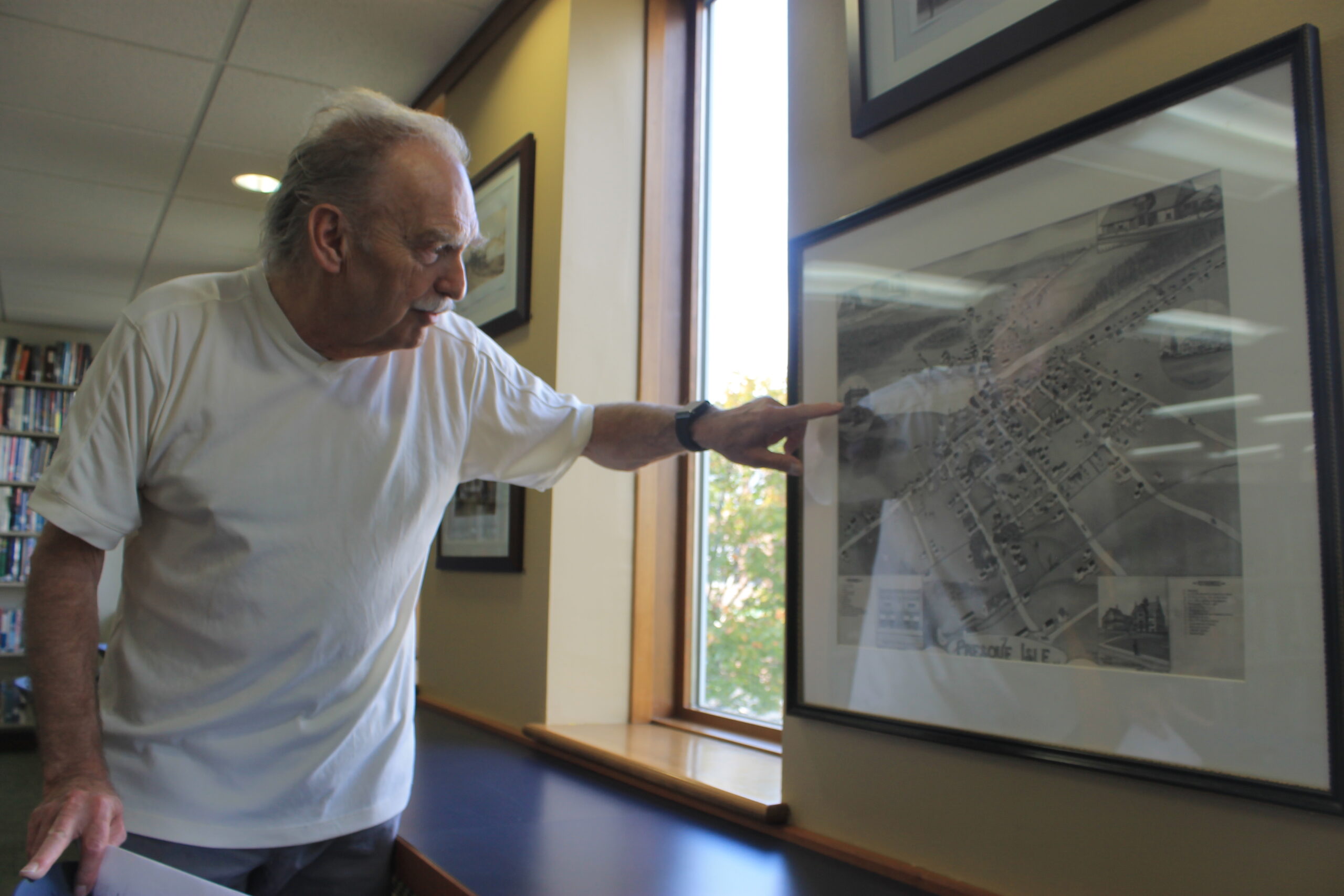
Clifton Boudman believes there is a lot to learn from historic photographs and maps.
“I love thinking about the past,” said Boudman, artist in residence at Presque Isle’s Turner Memorial Library.
Boudman spearheaded the creation of the library’s latest art and history display, the “Fort Road Gallery,” named for the historic name of what is now State Street.
The gallery overlooks the base of State Street and one the city’s oldest remaining buildings, the State Street Baptist Church, and until early winter, features a collection of photographs of Presque Isle in the late 1800s through early 1910.
That time was a period of major growth of Presque Isle as potato farming, railroads and other businesses developed and people settled in the area, Boudman said. Electricity came to Presque Isle in the mid-1880s, and in the three decades that followed, the population grew from 1,300 to more than 5,000.
Those citizens of a young town — Presque Isle did not become a city until 1940 — were served by dozens of local businesses, such as the Great Atlantic and Pacific Tea Co., which appears in a photograph of Main Street.
- A photograph of a Daughters of the American Revolution parade held in 1900 in Presque Isle, on display at the Turner Memorial Library. (Anthony Brino)
“They said this was the greatest place to come for entertainment east of Bangor,” Boudman said, referring to Presque Isle’s former opera houses. “There used to be plays all winter.”
Other photos show a 1900 parade of the Daughters of the American Revolution, a cold day with horse-drawn sleds and the original Carnegie library, built in 1908 and now comprising a wing of the Turner library.
The photographs also include an illustrated map of Presque Isle from 1894, which library patrons can borrow a magnifying glass to explore, and a view of the Dudley Homestead at the corner of what are now State and Second streets. That property was demolished in the 1960s to make way for a parking lot.
Many of the buildings shown in the exhibit are no longer present, with the exception of the State Street Baptist Church and several others. In June of 1909, Presque Isle suffered a devastating fire that destroyed more than 100 homes, the Congregational Church, Masonic Hall and potato houses, and left some 1,000 residents homeless.
Many of the people in the photographs, sourced from the Maine Memory Network and other historic archives, are not identified, though there may be some opportunities to learn from them, Boudman said.
“No one knows anything about many of the pictures,” he said.
The library’s Akeley Gallery, which features local and regional artists, also opened a new exhibit Sept. 26 with abstract landscape paintings by Jeffrey St. Peter of Presque Isle.







